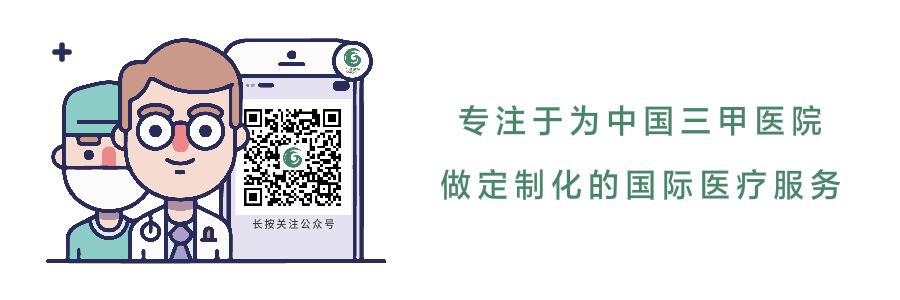-
News & Events

Opening Remarks
In recent years, Guangdong has striving to increase its health care service in grassroots areas, to build “highlands”, to climb the “peak”, and to build a "top-notch" health care industry! Regarding to build “highlands”, there are 50 hospitals being selected in Guangdong to carry out the project of constructing high-level hospitals with the government support of 15 billion yuan. Guangdong chooses a way of “Guangdong characteristics” to develop its high-quality health care industry.
Today, Guangdong Health Online proudly launches the column of "Guangdong Tour on High-level Hospital Construction", aiming at the goal of "going to the forefront", showing the achievements in construction of high-level hospital, and vividly presenting Guangdong’s experience in health care development.
On March 4, 2021, the first two session that marks the second 100-year struggle course of China was held in Beijing.
Duan Yufei, the Deputy of the National People's Congress (NPC), the Party Secretary and Director of the Health Commission of Guangdong Province, attended the meeting with two proposals. One of his proposals focused on 5G, he proposed to speed up the planning of developing "5G+ healthcare" and prepare for large-scale development, "Basing on the local conditions to design the development strategy - the developed areas will take action first, giving full play as an leading role, so as to stimulate the development in other areas and bring about a new pattern in '5G+ healthcare' building."
The "Internet+" has become an important topic in Government Work of the State Council since 2016, and has gained more and more attentions from the public. Duan Yufei's proposal has started much public discussion and become the hottest news. His proposal not only could evoke people’s profound thinking, and also is the reality and ideal support for Guangdong to take the initiative to start building “Internet+ healthcare”.
The day before Duan Yufei went to Beijing, which was March 1, in the presence of more than 150 hospital leaders at all levels and nearly 1.7 million netizens, the Guangdong Second Provincial General Hospital(GGH) and Huawei Technologies jointly held a conference to announce to build the hospital to a flagship for 5G healthcare applications in China, which brings a wave of “5G+ healthcare" innovation storm. Getting into the spirit of the atmosphere, a journalist started his report with eight words, "Spring tides are rolling in the Pearl River".
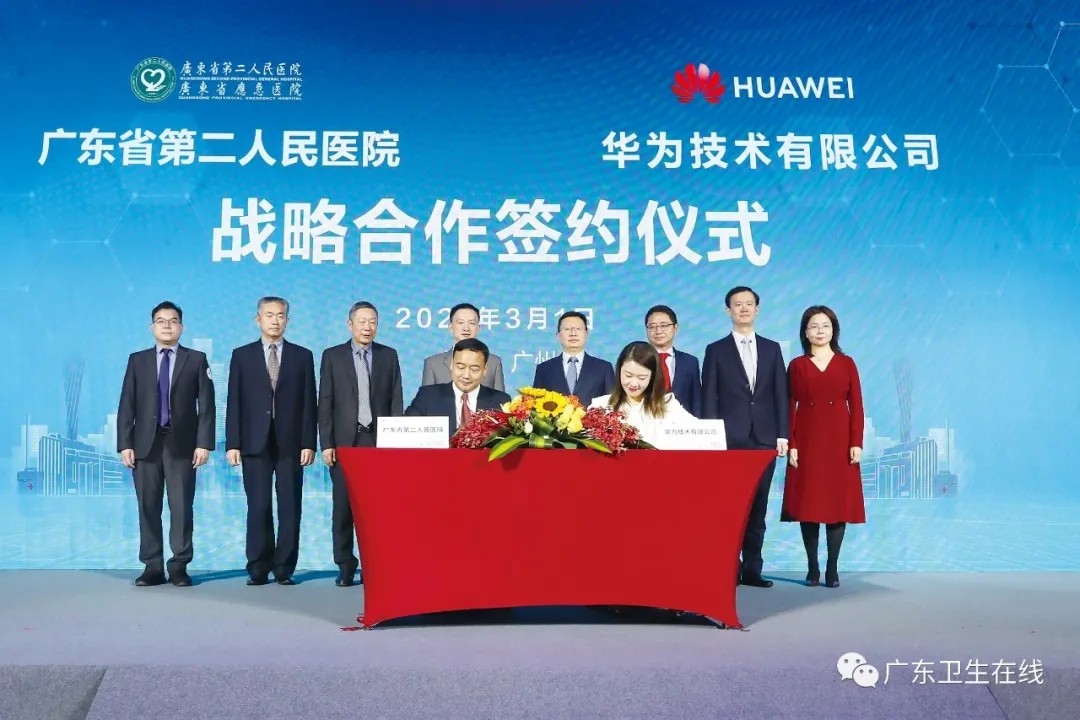
The Guangdong Second Provincial General Hospital and Huawei Technologies signed a strategic partnership agreement.
Walk into the 5G era
Build up a smart hospital
The duck first knows the warmth of river water in spring. The patient first feel the innovation of 5G smart hospitals.
At 11:30 p.m. on March 29, the dynamic cardiac monitoring screen of Cardiovascular Medicine Department, Internal Medicine II of the GGH suddenly alarmed: a 73-year-old patient had arrhythmia symptoms, and the room number, bed number and other information were shown on the screen very clearly. The medical staff rushed to the ward, defibrillated her with medication and saved her life from the death.
The patient, who just underwent surgery because of a myocardial infarction, was unable to call for help at the onset and had no relatives around. "Thanks to the telemetry heart rate monitor, if it had not detected the emergency in time, her life could have been lost in a few minutes." Nurse Ou Shiman said thankfully. Telemetry ECG monitor is a module in the 5G smart ward, smart wearable devices could monitor patient’s data in real-time, and ECG changes synchronously is displayed on the large screen of the nurses' station. Any emergency, once it's detected, sets off the alarm.
The smart ward is an example of the application scenario in the 5G smart hospital. Each patient who is hospitalized in the GGH will receive a wearable wristband. With the support of IOT, the wristband which is connected with positioning system, access control system and intelligent interaction system is equipped with functions such as real time monitoring, active risk detection and so on. Any emergency, once detected, sets off the alarm on the mobile terminal (medical staff’s smart wristband) and on the large screen in nurse station.
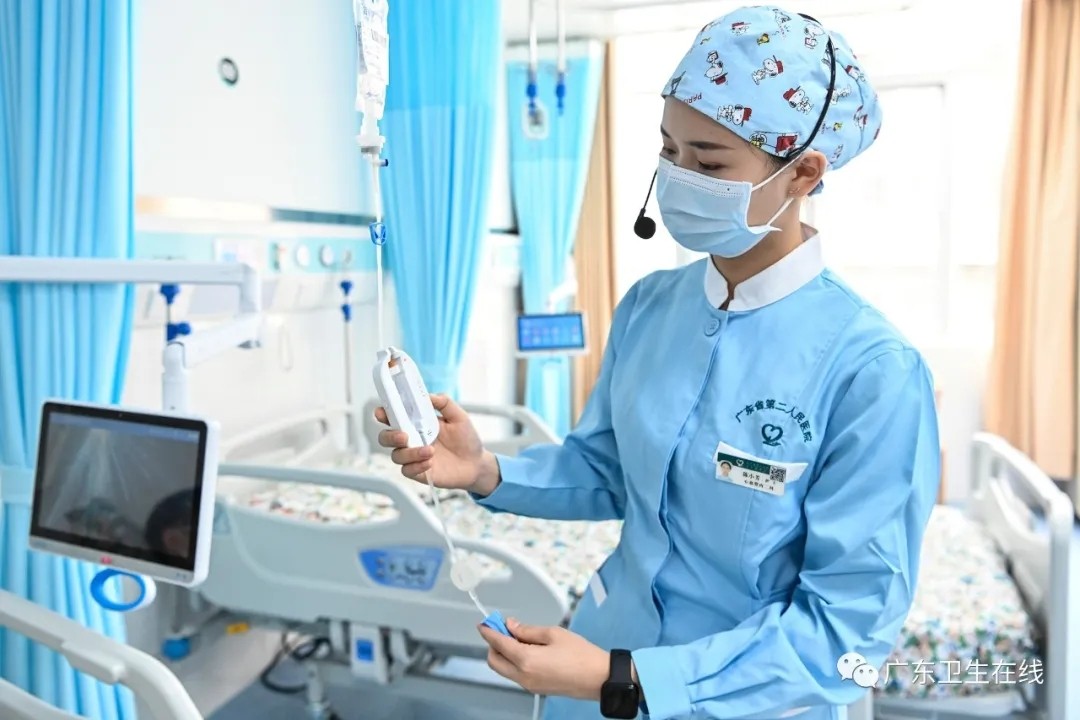
▲A nurse goes to the ward to help the patient remove the infusion when receiving a prompt from the smart wristband.
"In the past, the patients needed to ring the bell if they needed help, then the nursing staff at the station got informed and would call the doctor for help, which was a time-consuming process." Head Nurse Zeng Wenyuan said, “Thanks to the new technology, a multi-layered communication model now is replaced by a prompt one. It not only ensures early intervention to save patients' lives, but also simplifies the work process and improve our efficiency in responding to the patients."
While speaking, Zeng Wenyuan habitually looks at the large monitor screen on the nurse station, where she could check the infusion status - how many drops are left and what time it will be finished. In the past, they had to check the ward situation from time to time, and if they didn’t remove the needle in time, patients would get anxious and complain about problems such as blood return, "Now, the smart wristband solves the dilemma between us and the patient."
The efficiency and convenience that 5G technology brings to the hospital can be seen in other areas. For example, through the bedside display installed in the ward, patients can view the examination/surgery appointment situation, personalized health education video, examination report, hospital bill in real time without having to consult doctors/nurses again and again or wait long for paper reports; nurses can check the risk assessment that patients did before being admitted to the hospital, such as moderate-risk fall, low-risk pressure ulcers and others, which is more conspicuous than the traditional warning cards; patients can also use the device to order food online instead of waiting for the help of nurses or servers.
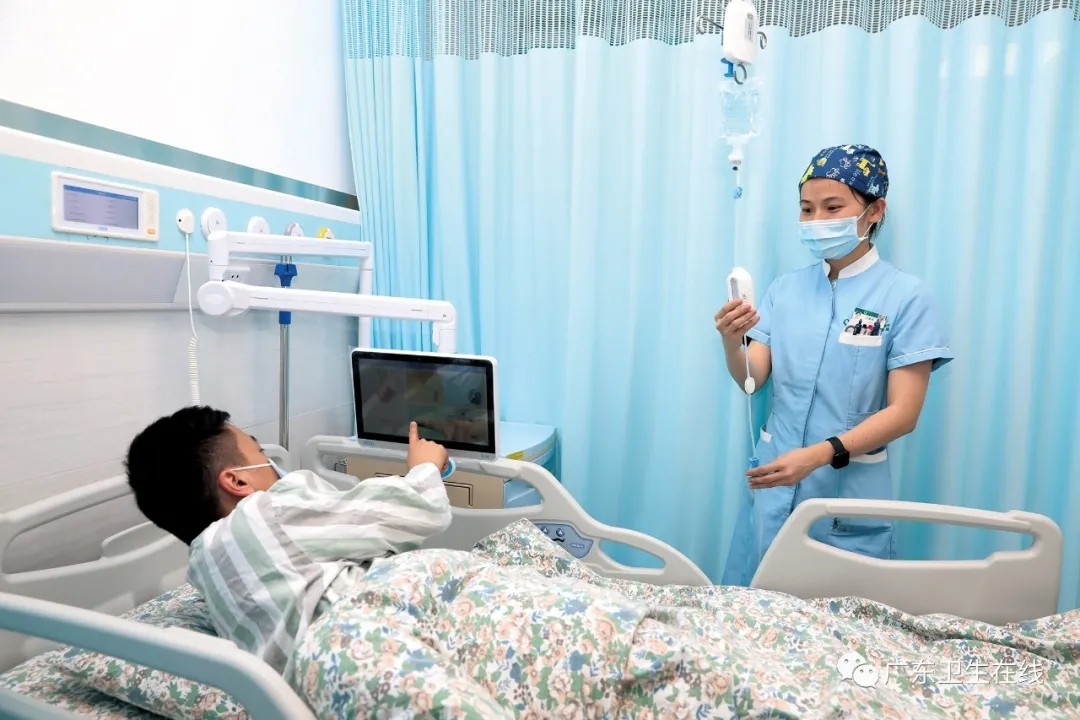
▲A nurse goes to the ward to adjust the drip rate for the patient after receiving a prompt.
The 5G+ healthcare not only benefits the hospital, but also those grassroots hospitals that cooperate with the GGH in telemedicine. For example, the multi-center remote ECG monitoring device, which can monitor the heart rate and ECG data of more than 3,000 patients at the same time, has already been employed in over a dozen of grassroots hospitals in Yangshan, Yuyuan and Yingde, and even in the remote hospital in Ganzi, Sichuan, which is a less developed hospital that the GGH is helping with.
The full-scenario 5G smart hospital is the result of the hospital’s further refinement based on its previous experience - as early as February 22, 2017, the hospital had set up an "Internet+” Chest Pain Center, which could receive and monitor the ECG data of patients at the grassroots as they were required to wear the ECG monitor when coming to local hospitals.
Compared with the past Smart Healthcare which focuses on function and application realization, and on specialty classification or process simplification, the 5G smart hospital values more on system integration, data sharing and full range coverage in all areas and the whole process of diagnosis and treatment.
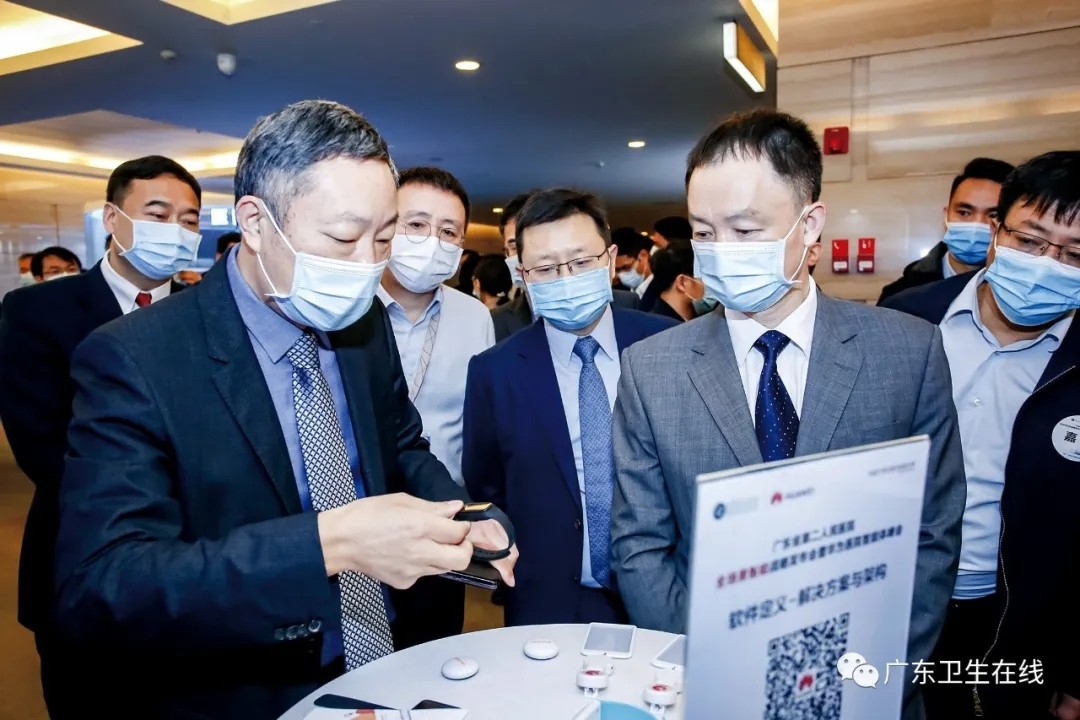
▲Duan Yufei, Director of Health Commission of Guangdong Province, Secretary of the Leading Party Members' Group(front right side) visited the 5G smart hospital, together with Tian Junzhang, Secretary of the Party Committee of the hospital(front left side)
"You can see the first full-scenario smart hospital as a human being. Different medical scenarios are like different parts of the human body. The hospital applies new technologies such as 5G, cloud computing, big data, IOT and artificial intelligence to various fields to realize the coordination of the management of the hospital's human, financial, and material elements.” Tian Junzhang, Secretary of the Party Committee of the hospital, said.
Qu Hongying, President of the hospital, described it as a "hospital of a smart brain". He said, "The full-scenario smart hospital is an advanced version of the smart hospital, is the result of the hospital’s exploration based on its experience in developing and practicing the Internet hospital and smart healthcare. It subverts people's concept and understanding of traditional hospitals."
Start from the smart hospital
Make the world “flat”
"Today is a good day, we have been preparing for this moment for seven years." On March 1st, Tian Junzhang, speaking at the press conference, feeling both touched and grateful, “I don’t expect many of you would attend this meeting, due to the pandemic, I do expect 200 but not 800 of you would come here from all over the country. Now we are so glad to expand the venue to accommodate more people.”
Only after the rain can you see the rainbow. At the beginning, many people didn’t believe the idea of building a smart hospital could become a reality. The hospital overcame all the difficulties and little by little realized its dream. Only then the hospital got the applause from the public.
In fact, as the demand for healthcare is rising, disease spectrum is changing, and the situations of aging problem and shortage of medical resources are getting severe, every hospital administrators should think about how to rebuild the operation and management mode of hospital by taking advantage of "Internet+" and other digital technologies.
In 2014, the hospital set up the first Network Hospital in China, "The Internet is like a high-speed railway that enables more patients in less developed areas where medical resources are scare to get equal access to high quality medical services." said Ren Nina, Deputy Chief Physician of the hospital and Director of the Yangshan County People's Network Hospital.
In the process of optimizing the service chain of the Network Hospital and promoting it to the whole province, smart inventions such as DingBei Doctor APP and AI Robotic Assistant, which now are frequently used in the full-scenario smart hospital, have been applied in the Network Hospital. In 2018, the GGH took the lead in proposing the construction of a smart hospital in the country, innovating to apply artificial intelligence in the fields of consultation and triage, imaging diagnosis, payment system, intelligent logistics, etc. It hoped "Internet+ healthcare” could continuously upgraded and to develop to the greatest.
This is the first smart hospital in China. We can not learn from the past. At first, we envisioned that the patients can see a doctor by just brushing their faces instead of waiting in a long queue, so as to improve patients’ experience. However, "due to the limitation of technical level at that time, the application scenarios are mostly fragmented. There is no connection between apps. It couldn’t bring revolutionary changes to the process, and also negatively affect the patient." Tian Junzhang said. Besides our hospital, other pioneers in this area have also learned the gap between the ideal and reality.
"Big data is considered to be the most valuable resource in the future, and so is the healthcare sector." As the devices for imaging and testing keep optimizing, collecting patients’ medical information is no longer a problem for the hospital, but what hinders the smooth development of smart hospital is the difficulty to achieve the real-time, accurate and high-speed transmission of big data. Under this scenario, 5G which features on a greater speed in the transmissions, a low latency and greater capacity of remote execution has become the best choice for smart hospital.
God favors those who dare to eat crab first. On April 1, 2019, the hospital first broadcast its "point to point" remote live surgery with the assistance of 5G+4K technologies.
Wang Wenlin, who has more than 30 years experience, is the director of the Institute of Chest Wall Surgery and chief physician of Cardio-Thoracic Surgery Department. He completed a live "Wang surgery" for thoracic deformity. The patient is a 2-year old child diagnosed with funnel chest. Thanks to the 5G technology and a surgical system equipped with a 4k camera, every detail of the surgery was broadcast live to the Yangshan County People's Hospital, which is 200 kilometers away from the hospital.
"We could watch the live surgery clearly! In the past, the grassroots doctors only learned new surgical techniques or other new knowledge by watching video. Now they not only can watch live surgery demonstration, but also could communicate with the surgeons in real time, which better improves the teaching effect." A doctor who watched the live surgery from 200 kilometers away said, "It is like watching a 'flawless' science education film."
The chief surgeon of the second live surgery demonstration was Li Feimeng, director of the Orthopedics Department of Yangshan County People's Hospital. He performed a surgery for a local patient with pelvic fracture, which was presented on a super-sharp 4k TV in the conference room of the GGH via 5G network. Any emergency occurred during the surgery could be reported by the surgeon promptly while Qi Yong and Chen Zaohong, chief surgeons of Joint Surgery Department of the GGH could offer guidance through "face to face” communication.
"Due to limited technical level, the problem of 1 to 2 seconds delay of the live surgery can arise. There was a awkward situation that the picture the doctors saw in Guangzhou through the screen might be the action of the doctors in Ynagshan 2 seconds ago. 5G technology shortens the delay to 40 milliseconds, which is 0.04 seconds." Tian Junzhang said. He loved a best-seller that was published 10 years ago - the World is Flat. "5G makes the ideal become true - the world is flat. The cooperation between two remote hospitals can be realized by 5G, and the distance between Yangshan and Guangzhou seems to ‘disappear’."
The live surgery was recognized as a result of the hospital’s innovation in the fields of "Internet+ healthcare" and health poverty alleviation project. It was also a technical test that realized multiple scenarios such as remote ultrasound and emergency rescue through 5G technology. More revolutionary changes were going through at the headquarters of the hospital - just before the live surgery, the hospital, China Telecom and Huawei Technologies signed a partnership agreement, aiming to build the hospital to a flagship for 5G healthcare applications in China.
"From face recognition for patient admission to ultra-high-speed capture of patient’s information; from smart wristbands that monitor ECG changes and pulse rate to smart toilets that detect a range of disease markers in stool and urine. All these processes from early diagnosis to treatment could be carried on smoothly with the assistance of information technology." Tian Junzhang said. He noted that as 5G technology gets more sophisticated, he has enough confidence to build up the most ideal hospital and could emancipate his imagination.
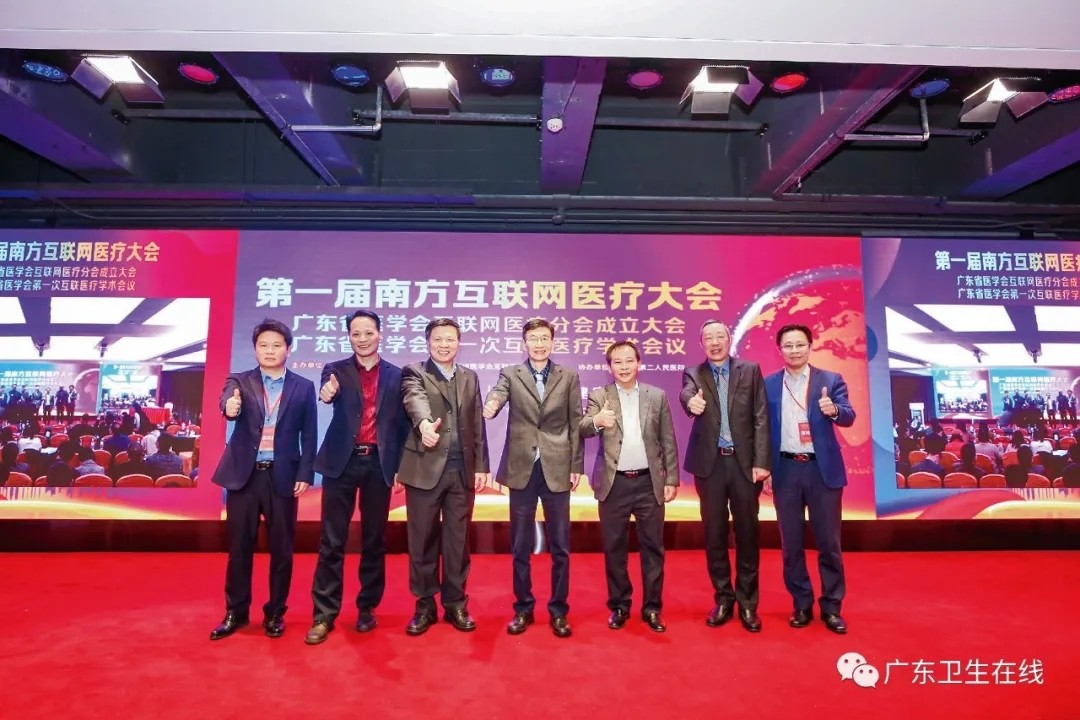
▲On December 25, 2020, Yao Zhibin (center), President of Guangdong Medical Association, and Huang Fei (third from left), Deputy Secretary of leading party group, Deputy Director and First-level Inspectors of Health Commission of Guangdong Province, attended the First Southern Healthcare Internet Conference. On that day, Tian Junzhang (second from right) was elected as the first Chairman of the Committee of the Internet Branch of Guangdong Medical Association.
Join hands with Huawei
To build a smart brain
All seeds need soil, sunlight and water in order to germinate. If we compare the hospital’s rich experience in "Internet+ healthcare" to the soil, and the gradually sophisticated 5G technology to the sunlight, then the water that makes the full-scenario smart hospital to “grow” should be a large amount of investment.
In 2020, because of its great achievements in the field of emergency rescue and outstanding performance in the prevention and control of the pandemic, the GGH was chosen by Guangdong Province as one of the three national treatment bases of a major pandemic, and had received 100 million yuan and 200 million yuan for the hospital construction, which were respectively granted by the National Development and Reform Commission (NDRC) and the Department of Finance of Guangdong Province.
"This is an honor given by our country and also a great opportunity for us." Tian Junzhang said. The project is part of China's New Infrastructure Plan - different from traditional infrastructure construction. The New Infrastructure Plan includes building information infrastructure, converged infrastructure and the infrastructure of innovation, of which 5G networks, artificial intelligence (AI), Internet of Things (IOT) and cloud computing are included.
The government support is huge, naturally the requirements are extremely strict. The GGH has to come up with a sophisticated plan within one month to seize this opportunity. Tian Junzhang gathered all party members of the hospital to brainstorm the possible solution. They finally decided to carry out the new infrastructure project by building a 5G smart hospital.
In fact, the hospital should own their recognition from the government to the 5G technology. In 2020, many digital devices that could automatically collect or evaluate patient’s data had been widely put into use in the isolation ward for COVID-19 patients, including remote ECG device, advanced stethoscope for remote diagnosis, devices for DR and POCT and multi-angle camera. Through the new generation of network, the collection of patient’s data could be easily achieved. And those devices acting as the “Third Eye” for the medical and nursing staff contributed a lot in helping the hospital on prevention and control of the virus, for example, reducing the risk of nosocomial cross infection, and improving the quality and efficiency. With the 5G technology as a support, the GGH had taken the lead in implementing the system of Infection Control Supervisor, which has been widely used in Guangdong and Hubei, and has been promoted to the whole country.
The hospital needed a strong partner to carry out its new infrastructure project, and Huawei became the best choice. "Huawei is good at 5G network construction and can provide an overall solution." Tian Junzhang said. Coincidentally, Huawei is also seeking a breakthrough in the healthcare sector. It has been cooperating with many other hospitals besides the GGH in the field of "Internet+", "Because we have rich experience in “Internet+ healthcare” and more importantly, we have the opportunity of carrying out the new infrastructure project supported by the government, we and Huawei just hit it off. "
"We plan to build a full-scenario smart hospital on the basis of an integrated digital platform in the next five years, and strive to promote the process of complete digitalization in every area of the hospital." Tian Junzhang said. The project is aiming at centralizing on patients, simplifying the diagnosis and treatment process, solving the problems in realities and digging out key points for multiple application scenarios. The two parties had held countless meetings, large or small, to discuss about this project. Tian Junzhang would attend every meeting whenever he could, and eventually he witnessed and contributed to the introduction of the "1+1+3+1" intelligent digital architecture, "the whole architecture will include a convergence network, a digital platform, three application centers and one ‘brain’."
Soon, Huawei started its work. According to the new architecture, almost every part of it needs to be upgraded or even rebuilt. More than 30 technical staffs from Beijing and Shenzhen, who are experts in the field of artificial intelligence and big data had made up their mind, "we won’t go home for the New Year, if the project is not completed."
Staying in the hospital for the next three months, they wore and monitored various kinds of devices that are connected with IOT system and the hospital's intelligent system so as to support the hospital’s future massive data handling; taking advantage of the features as an emergency hospital and Internet hospital, and by using the 5G, Wi-Fi6, edge computing and other technologies, the hospital information system would be upgraded thoroughly to better realize multi-scenario collaborative applications.
In the first phase of the project, the Huawei team deployed more than 1,000 Huawei's new generation AirEngine Wi-Fi 6 series products which are connected with IOT modules, switches, and intelligent operation and maintenance management cloud platforms in the hospital. It is believed that the first round of preparation is sufficient to support the hospital to realize its future full-scenario intelligent applications such as remote ward round, patient positioning, asset monitoring, infusion monitoring, remote visitation, intelligent security, and intelligent operation, etc.
The final version of the 5G full-scenario smart hospital is a perfect presentation of Huawei's solution called "Five Networks and Three Technological Convergences". Hospitals usually have five networks: intranet, extranet, IOT, intelligent private network and video network, which are isolated from each other due to different development time and developers, but Huawei managed to connect all the data of these isolated Internets. The connectivity of IOT and non-destructive Wi-Fi 6 support roaming ensures a stable Internet environment for remote ward round. The connectivity of wired and wireless networks reduces the difficulty in management and maintenance costs; the whole Internet architecture equipped with sound security system ensures a safe and health network environment for the hospital’s information system. The "Five Networks and Three Technological Convergences" solution provides a reliable and secure internet connection for IOT applications, remote consultation, intelligent security and intelligent operation.
With this strong network construction solution, the full-scenario intelligent applications could be realized in all areas of the hospital. For patients, to provide better digital healthcare services during the whole process so as to improve the comfort of the experience; for nursing staff, to create intelligence-based workstations so as to provide intelligent assistance through the whole process of diagnosis and treatment; for doctors, to create an integrated platform for clinical research based on artificial intelligence; for hospital managers, to create a refine intelligent operation and management solution which is transparent, manageable and controllable; for the integrated care organizations, to create an Internet hospital so as to provide easy access for patients and to improve the medical quality level in grassroots areas.
On the morning of March 16, in the emergency center of the GGH, Zhu Weijie, an engineer of the information department, showed the "smart brain" of the hospital to the visitors. The 3D model of the hospital was displayed on the big blue screen, and the data of the number of outpatients, the number of doctors, the occupancy of the operation rooms and of the elevator, etc. were dynamically displayed on the screen in a visual way.
"As the full-scenario intelligent applications are fully realized, the GGH will become a smart hospital that can sense, think, execute and grow." Tian Junzhang said.
Envision the future
Provide a personalized health butler service
"In the past, I have experienced the charm of live surgery with 5G + 4K technologies, and now I am more optimistic about the possibilities of 5G full-scenario smart hospital." Lai Jun, a young doctor, said. He gave an example of the pre-hospital emergency system that had been launched on March 1, "the ambulance becomes a mobile hospital, allowing patients to get admitted as long as they get in the car."
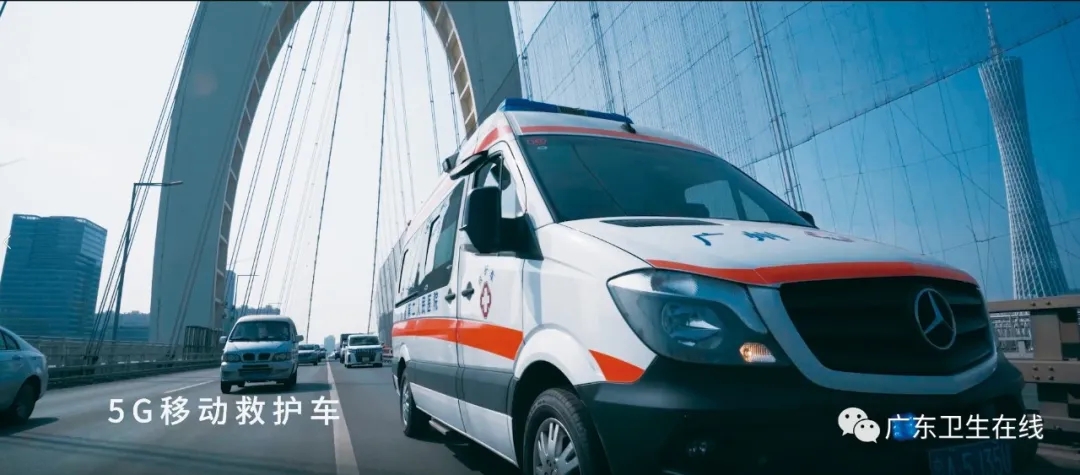
▲Smart emergency system, the ambulance works as a mobile hospital.
Once, an elderly man suffered a sudden stroke and fell into critical condition. His family called 120, and the 5G ambulance of the GGH was immediately dispatched. Once the patient was on board, the medical staff used the 5G medical equipment configured in the ambulance to complete a series of pre-hospital examinations such as head CT, and the data was transmitted back to the hospital in real-time. In-hospital experts at the same time started MDT online consultation to determine the treatment option. After the ambulance arrived at the hospital, the medical staff had been fully prepared for emergency rescue.
"Whether in pre-hospital emergency rescue, in-hospital treatment, or post-hospital follow-up, 5G smart healthcare plays a vital role." The 5G full-scenario smart hospital also connects offline clinics with online Internet healthcare, where patients can have high-definition video calls with their doctors and get their prescriptions made and bills paid. They can also have their prescriptions automatically delivered to their home or go get the medicine themselves at a pharmacy. All of these can give patients the feeling of being in a smart hospital and have the healthcare services they need provided right from home.
At present, the departments of Rheumatology, Neurology, Internal Medicine-Cardiovascular, and Dermatology, etc., have first provided online consultation service through 5G network, which is most favored by patients with chronic diseases or re-visiting patients. It has changed the traditional doctor-seeing procedures, which usually consists of online registration and offline consultation.
Not only in the diagnosis and treatment process, the 5G full-scenario smart hospital also applies advanced technologies in security. Currently, more than 500 "5G+AI" cameras have been set up in the hospital, which enable many functions in intelligent degree such as face recognition, electric vehicle recognition, crowd density detection and boundary violation alarm. Once suspicious behavior is detected, alarm signal will be sent to the security guards for early intervention. These cameras are so smart that they can identify not only people but also fire, and will also alert the police immediately once they sense the fire.
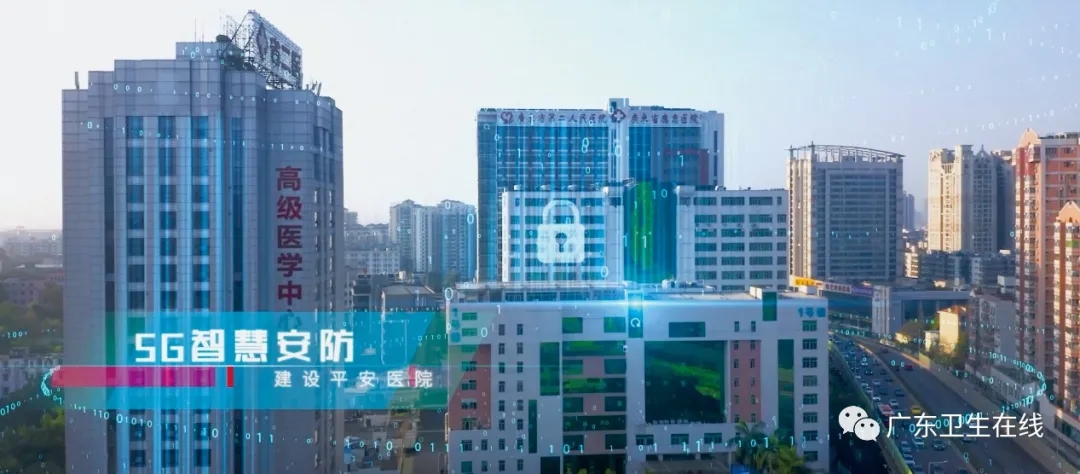
▲ Smart security, eliminate security risks
In addition, under the command of the "smart brain", 5G decontamination robots can independently do the jobs such as disinfection, sterilization and air filtration in the hospital, so that nurses no longer need to do that manually every night; indoor delivery robots can weave around wards, distributing clothes and cleaning supplies to patients, or even cheering up the atmosphere due to its cute and robotic outlook. The 5G smart patrol robot for temperature detection, 5G management systems for hand hygiene and medical waste are connected with the IOT-based transmission management system and other "black technologies" to achieve accurate and effective management and reduce the risk of nosocomial infection.
"The biggest advantage of the “smart brain” is that it is 'growable' and can be continuously upgraded to equip with more advanced functions as technology develops." Qu Hongying said. For example, our hospital is planning an initiative health management program to create a personal “health butler” for patients, "Smart wearable devices will record user’s data, such as steps, blood pressure, heart rate, etc. Together with his/her physical examination data and medical data, all these information are measured together to predict the future health status of the user."
The realization of the 5G full-scenario applications in multiple hospital is also put on the schedule. The hospital hopes to connect the Civil Aviation Branch Hospital and other branch hospitals in Zhuhai and Yangshan through the same “smart brain” so as to achieve homogeneous medical quality.
The in-depth integration of technology and clinical applications will be the key to the future development of "Internet+ healthcare". Nowadays, many hospitals and medical institutions from all over the country come to our hospital every day to learn from our experience. Tian Junzhang, Qu Hongying and the nurse Ou Shiman are all their targets for advice. Many of them also experience all those full-scenarios supported by the "black technologies" in the hope that they could learn the great changes brought by intelligent technologies in person.
Many people will ask when doing their research in the GGH, why would it be the Guangdong Second Provincial General Hospital? Why in Gunagdong?
"Maybe our hospital is not strong enough, so we are always aware of the crisis, and we keep looking for solutions and finds ways to move forward." Tian Junzhang said. In the 5G era, our hospital will continue to promote upgrades to our smart hospital and to explore more opportunities to develop smart healthcare, "To improve the convenience of diagnoses and treatments, the efficiency of communication, and the comfort of the experience. Our hospital will keep the leading role in the reform and innovation of the healthcare industry and help to build a ‘Healthy Guangdong’ and a ‘Healthy China’."
It is not only because of the development direction of the GGH, but also because of the Health China Strategy of "Internet+ healthcare" implemented in Guangdong Province. From building the first nationwide Network Hospital, AI Village Doctor system, Health Management Platform, to the first 5G full-scenario smart hospital, all these great achievements are not only due to the hospital’s spirit of exploration, but also to the vision of those great reformers of Health Commission of Guangdong Province, who took the lead to promote the strategy of "Internet+ healthcare", and take actions to realize it.
Informationization in the medical industry has gone through three stages: basic informationization, application informationization and digitalization of healthcare, and is ushering in the fourth stage featuring on intelligent healthcare. At present, the intelligent healthcare services have fully covered all Grade-III hospitals and 90% of Grade-II hospitals in Guangdong Province, among which "One-button treatment" and "One-stop consultation" have refined the diagnosis and treatment process, and "One Universal Code" and "Integrated Service" have improved the comfort of the experience. During the pandemic, new technologies such as 5G, AI and big data were widely used in many areas such as epidemiological surveys, diagnosis and treatment.
At the press conference on March 1st, Duan Yufei, director of the Health Commission of Guangdong Province, said, "In the future, Guangdong Province will continue to facilitate the construction of 5G smart hospital, to improve the patient’s experience, to promote graded diagnosis and treatment services in the hope that Guangdong Province will play a vital role in building a high-quality healthcare sector and gain more wisdom and experience in implementing ‘Internet+ healthcare' strategy." He noted that a wave of healthcare reform is coming to the medical staff, patients and hospital administrators at an accelerated pace.
This article is forwarded from the official WeChat account_广东卫生在线
